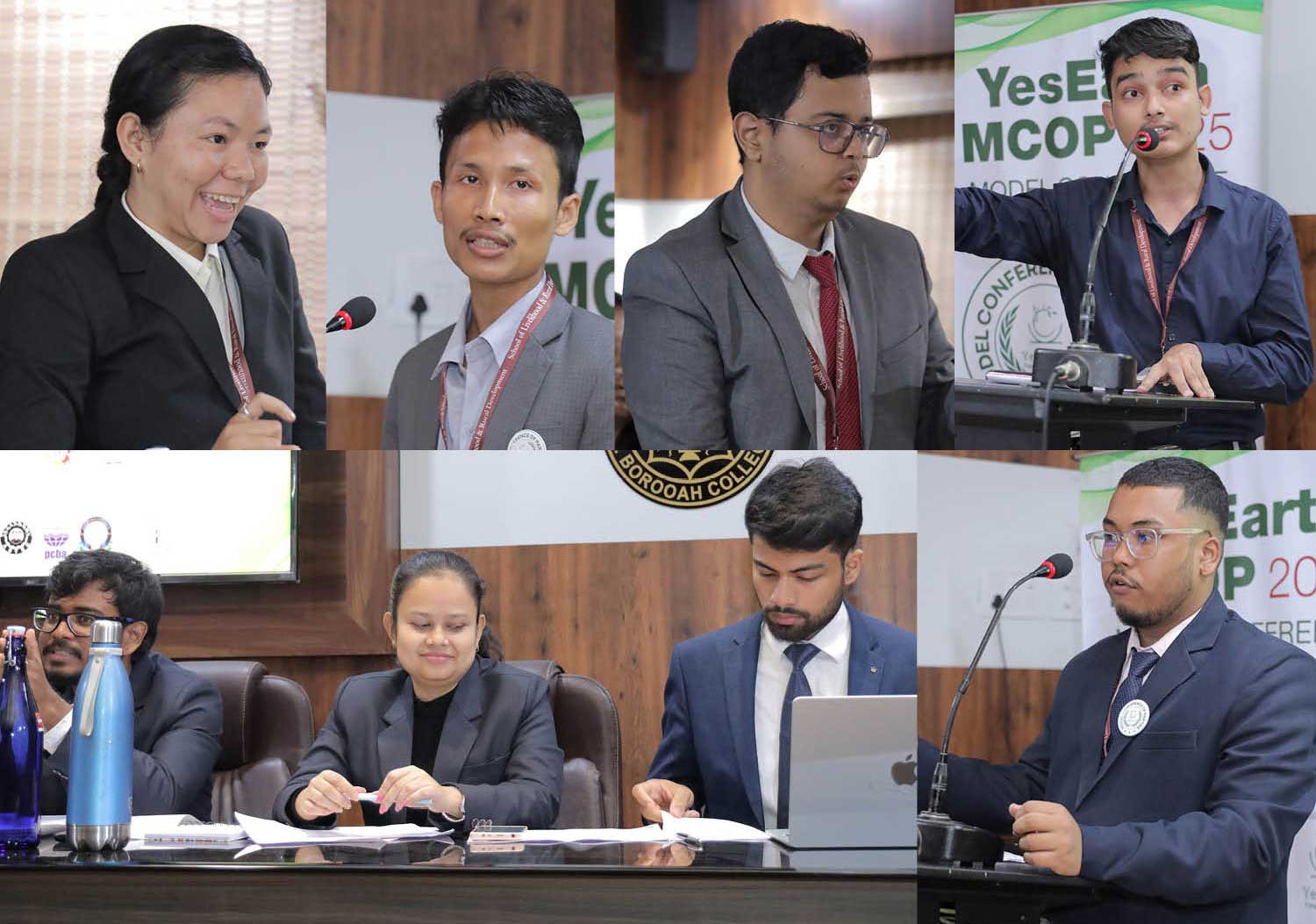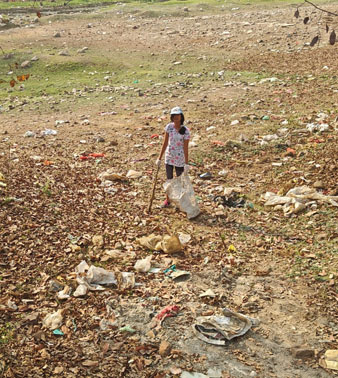Aerosols: Small Particles with Big Impacts
Bharati Paul, PhD, Postdoctoral Fellow, Aryabhatta Research Institute of Observational Sciences, Uttarakhand, India
“Aerosols”- what are they? Where do they come from? What is their size, shape, and type? Do they play any role in the atmosphere? How do we measure them? My mind was juggling with a hundred questions after I got a ‘Go Ahead’ signal to dive deep into this subject. Ever since I made up my mind, it turned me into a keen observer of nature and set me off on my journey to research the macrocosm and microcosm of aerosols.
Take a deep breath. Whenever we have watched smoke billowing from a wildfire or coming out of factory chimneys, dust blowing in the wind or ash erupting out of volcanoes, we have seen aerosols. Even in a pristine environment, it is certain that we inhale tens of millions of solid particles and liquid droplets over the course of a day. These ubiquitous specks of matter are known as aerosols. They are found in the air that covers every ecosystem of the hills, oceans, lakes, forests, deserts, and mountains. They keep floating in the free atmosphere, continuously drifting from the ground surface to the upper stratosphere or vice versa. Well, this was my first small step, when I began to unwrap a big mystery box.
The bigger story of course is that aerosols can make their way into the atmosphere through multiple pathways. They are brought to the atmosphere from nature, human activities, and (partially) the cosmos. Scientists figured out that the bulk (about 90 percent) of aerosols originate from nature- forest cover, volcanoes, forest fires, sea salt, and dust, of which sea salt and dust are the two most abundant aerosols. Giant sandstorms whip dust from deserts into the atmosphere and wind-driven spray from ocean waves fling sea salt aloft. The remaining 10 percent comes from human-made sources that include fossil fuel combustion, biomass burning, incinerators, smelters and thermal power plants. The fallout of human activities- deforestation, overgrazing, and drought in particular, alter the land surfaces at a frenetic pace increasing the rate at which dust aerosols enter the atmosphere. Most aerosols stay suspended in the atmosphere for short periods, typically for four days to a week, depending on the season and weather conditions; surges of aerosols can make their way into the atmosphere from almost anywhere on this planet.

Desert dust, volatile organic compounds from vegetation, smoke from forest fires, and volcanic ash are natural sources of aerosols (Source: https://earthobservatory.nasa.gov/features/Aerosols)
While trying to get a better grasp of the advances in aerosol taxonomy in recent decades, I found different specialists across the world named aerosols based on their size- ultrafine, fine, coarse matter. Aerosols are referred to as particulate matter by meteorologists (PM2.5, PM10, or PM1), while engineers refer to them as nanoparticles. For those in the media, terminology like smoke, ash, dust, and soot are commonplace. Climatologists typically employ a distinct set of designations for aerosols that relate to their chemical composition. They have categorized aerosols into some key groups based on their chemical nature. Aerosols often clump together to form complex particles, which again makes these terms less perfect in practice. These details persuaded me to characterize what aerosols are, which is no small feat.
The energy that sun provides drives the earth’s climate, but not all the energy that reaches the top of the atmosphere finds its way to the surface. That is where aerosols play a definitive role- they reflect 25% of the sun’s energy into space! The astonishing thing about aerosols is that these tiny particles have a big impact on Earth’s climate. They play a direct role in cooling/warming the atmosphere by scattering or absorbing the incoming solar radiation. Although most aerosols reflect sunlight, some do absorb it, depending on their composition and physical properties (colour). Pure sulfates, nitrates, and salt particles reflect nearly all radiation they encounter and cool down the atmosphere, whereas black and brown (organic) carbon absorbs radiation readily and warms up the atmosphere. In addition to scattering or absorbing radiation, aerosols can alter the earth’s reflectivity(albedo), and the climate via clouds. That is true, as aerosols do play a critical role in this process, serving as the tiny “seeds” called cloud condensation nuclei. Naturally occurring sulfates, sea salt, or ammonium salts are the most common nuclei in pristine environments. In polluted atmospheric conditions, higher concentrations of water-soluble particles serve as nuclei. This influence of aerosols on clouds is called the “indirect effect”. The direct and indirect effects of aerosols vary considerably in space and time; for smaller space and time scales, the climate effect of aerosols can be significant.
Though the fact that aerosols could affect air quality and climate has been well-known for decades, the measurements of aerosols and the magnitude of such effects were not properly recorded. The situation has improved considerably with time and need; today scientists use an array of ground-based instruments, aircraft, and satellites to monitor aerosols at higher temporal and spatial scales. Ground-based sensors can measure the atmospheric concentration of aerosols, chemical composition, and scattering capability. Parallelly, satellite instruments have evolved over the years, securing a unique vantage point for observing atmospheric aerosols over land from space.
Earth-observing satellites provide a deeper understanding of how aerosols affect the Earth’s climate, their global distribution, and sources of origin. Satellite instruments MODIS, MISR, and Sentinel-5 are capable of viewing aerosols at many more angles, wavelengths and providing accurate measurements. Based on satellite measurements, scientists can tell whether a given plume of aerosols came from a natural source, or if is a pollutant produced by human.

Ground-based instrument for aerosols measurement and Satellite-instrument monitoring aerosols (Source: https://earthobservatory.nasa.gov/)

Smoke billowing from several fires along the southern coast of Turkey, captured by the Copernicus Sentinel-3 Mission on 30 July 2021 (Source: https://www.esa.int/ESA_Multimedia/Images/2021/08/Smoke_billows_from_fires_in_Turkey)

Dust clouds observed over the west of Africa Mali/Algeria, Saudi Arabia, Iran, and China on 12-15 March 2021 (Source: https://user.eumetsat.int/resources/case-studies/major-dust-outbreaks-africa-middle-east-and-china)
Despite great progress in aerosol research using the integration of several technologies, many questions stay unanswered. Diverse types of particles clump together to form hybrids which get more difficult to decipher. Measuring particles within clouds is still challenging. Also, changes in characteristics and interaction with meteorological parameters are yet to be explored appreciably in detail. Above all, the quantitative uncertainties in the measurements of aerosol concentration and, especially their properties, need to be reduced. All the gaps need to be filled to fully understand the impact of aerosols on climate change and air quality. This keeps the flame of curiosity alive in me to explore all the other dimensions that remained unwrapped till now.
Sources:
NASA Earth Observatory (https://earthobservatory.nasa.gov/)
NASA Science (https://science.nasa.gov/)
Earthdata (https://www.earthdata.nasa.gov/)
NASA Earth Sciences Goddard Earth Sciences Division (https://earth.gsfc.nasa.gov/)











